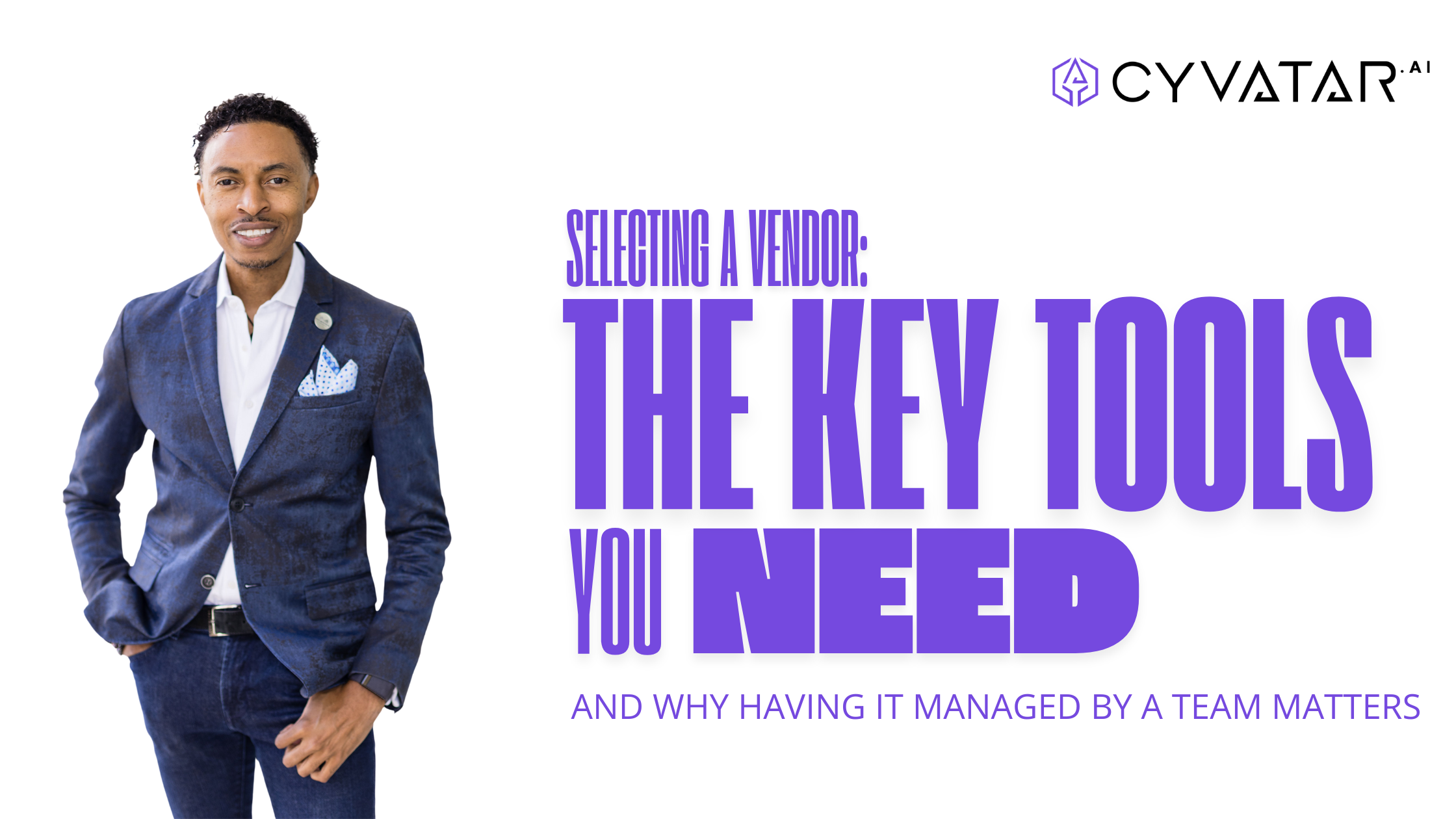Selecting a Vendor: The Key Tools You Need and Why Having It Managed by a Team Matters

Selecting a Vendor: The Key Tools You Need and Why Having It Managed by a Team Matters
Courtney Pereira | 12/23/2024Choosing the right vendor is like selecting the perfect partner for a dance. When you find the right one, everything flows smoothly, but if you choose poorly, you’ll be stepping on each other’s toes. For any SMB, making the right vendor choice is a critical decision that can determine the success or failure of your operations. The right tools and a dedicated management team can make all the difference in ensuring a successful partnership. Let’s dive into the key tools you need and why having a vendor managed by a team matters.
Identifying Your Needs
Before you even lace up your dancing shoes, you need to know what kind of dance you’re doing. Similarly, before you begin the vendor selection process, it’s essential to identify your specific needs. What are the core services or products you require? Are you looking for cutting-edge technology, reliable logistics, or perhaps stellar customer service? Understanding your needs will help you narrow down potential vendors and ensure that they align with your business objectives. Think of it as creating a playlist for your dance – you need the right tunes to set the right mood.
Key Tools for Vendor Selection
Now that you know what you need, it’s time to gather your tools – your dance moves, if you will. Here are the key tools that will help you select the perfect vendor:
1. RFP (Request for Proposal)
A well-crafted RFP is like a dance card from the old days, outlining your needs and expectations, allowing vendors to provide detailed proposals that address your requirements. It’s your chance to tell potential partners exactly what you’re looking for in a dance – or in this case, a business relationship.
2. Vendor Assessment Matrix
This tool helps you evaluate and compare vendors based on criteria such as cost, experience, capabilities, and references. Think of it as a scorecard for your dance-off, helping you objectively rate each vendor’s performance.
3. Risk Assessment Tools
Even the best dancers can sometimes trip. Evaluate the potential risks associated with each vendor, including financial stability, security practices, and compliance with regulations. This ensures you’re not caught off guard by any unexpected missteps.
4. Performance Metrics
Establish key performance indicators (KPIs) to measure the vendor’s performance over time. These metrics are your way of keeping the rhythm, ensuring that your vendor keeps in step with your expectations.
The Importance of Team Management
Selecting a vendor isn’t a solo dance – it’s a carefully choreographed performance that benefits from multiple dancers. Here’s why having a team matters:
1. Diverse Expertise
A team brings together diverse expertise from different departments such as IT, legal, finance, and operations, ensuring a comprehensive evaluation of potential vendors. It’s like having a troupe of skilled dancers, each bringing their unique moves to the floor.
2. Balanced Decision-Making
Team-based decisions are more balanced and less likely to be biased, leading to better choices for your business. When everyone gets a say, you avoid the pitfalls of a one-sided dance.
3. Continuous Monitoring
A dedicated team can continuously monitor the vendor’s performance, address issues promptly, and ensure that the partnership remains beneficial. They’re like the stage crew, ensuring everything runs smoothly behind the scenes.
4. Streamlined Communication
Having a team ensures clear and streamlined communication with the vendor, reducing misunderstandings and improving collaboration. Good communication is like perfect dance synchronization – it makes everything look effortless.
Steps to Effective Vendor Management
So, how do you ensure your vendor management process is as smooth as a well-rehearsed routine? Here are the steps:
1. Define Roles and Responsibilities
Clearly define the roles and responsibilities of each team member involved in the vendor selection and management process. Everyone needs to know their part to avoid stepping on toes.
2. Regular Meetings
Schedule regular meetings to discuss vendor performance, address any issues, and make necessary adjustments. These meetings are like rehearsals, helping you fine-tune your performance.
3. Performance Reviews
Conduct regular performance reviews based on established KPIs to ensure that the vendor is meeting your expectations. Think of these reviews as scorecards from judges, ensuring the vendor keeps up their game.
4. Contract Management
Ensure that all contractual obligations are met and that the terms of the agreement are being adhered to by both parties. This is the contract that ensures everyone knows the rules of the dance.
Conclusion
Selecting the right vendor and managing them effectively is crucial for the success of your SMB. By using the right tools and involving a dedicated team, you can ensure that your vendor partnerships are productive, compliant, and aligned with your business goals. A well-managed vendor relationship can lead to improved efficiency, cost savings, and long-term success. So, put on your dancing shoes, gather your team, and step onto the floor with confidence – your perfect vendor is out there, ready to dance the night away with you.
